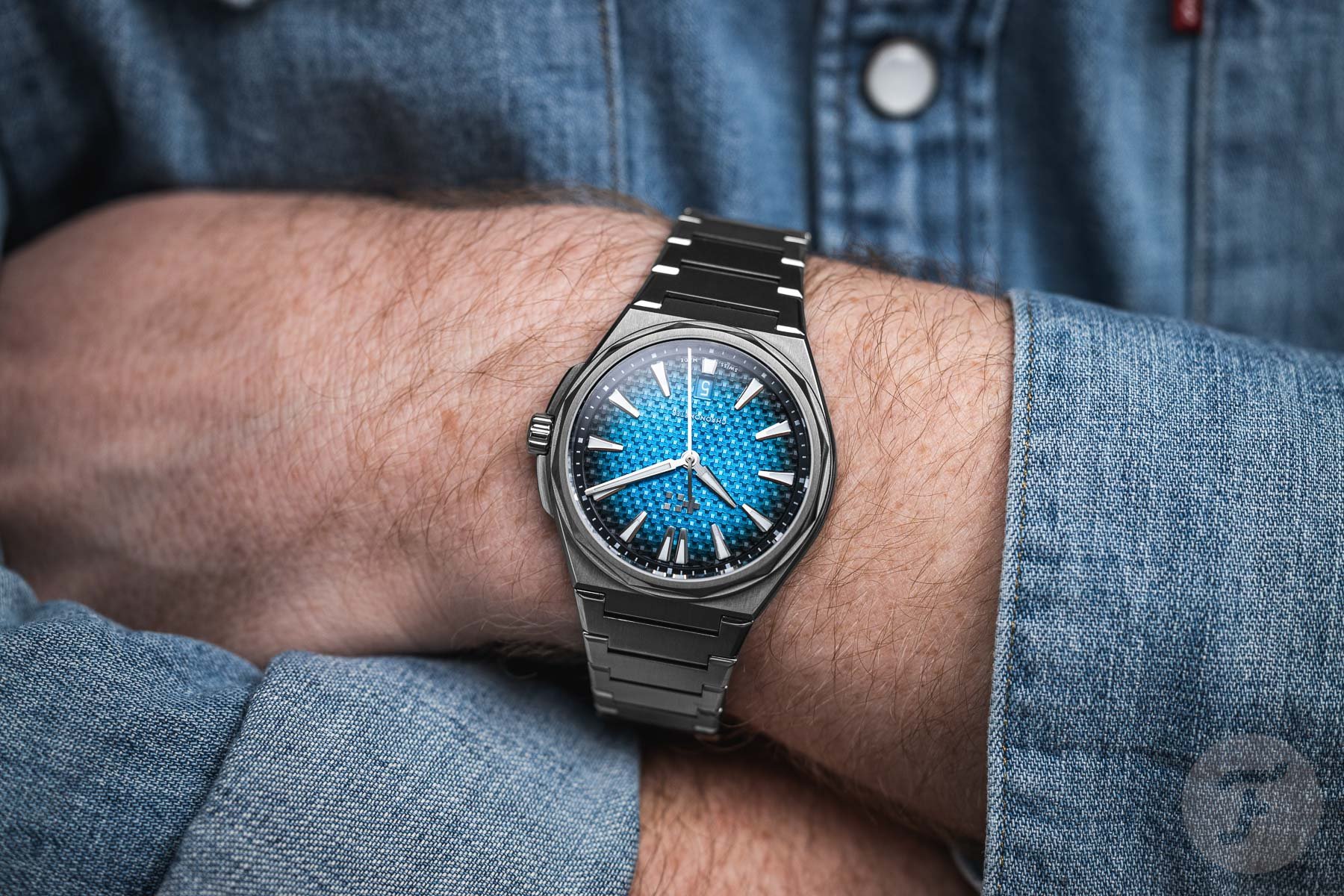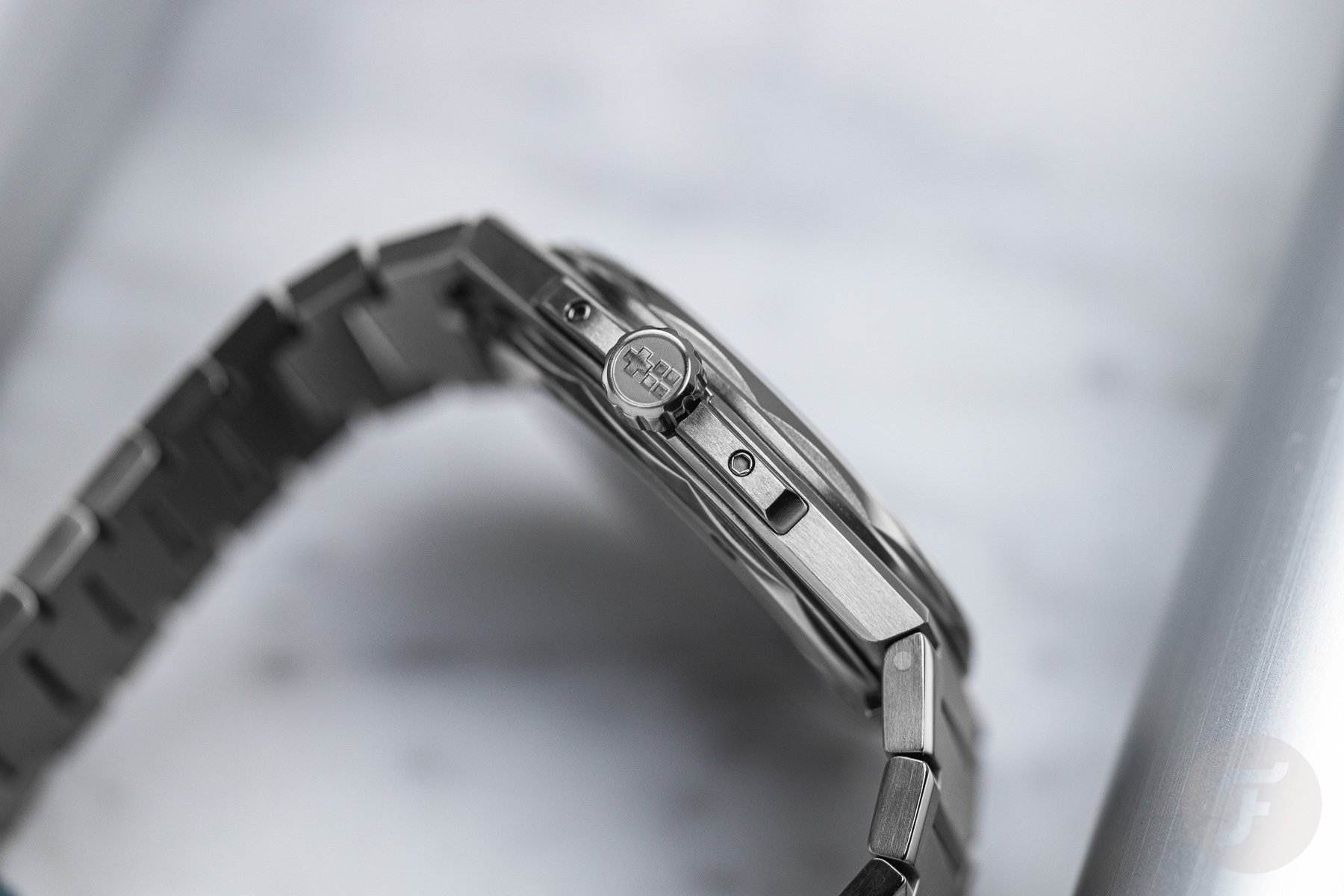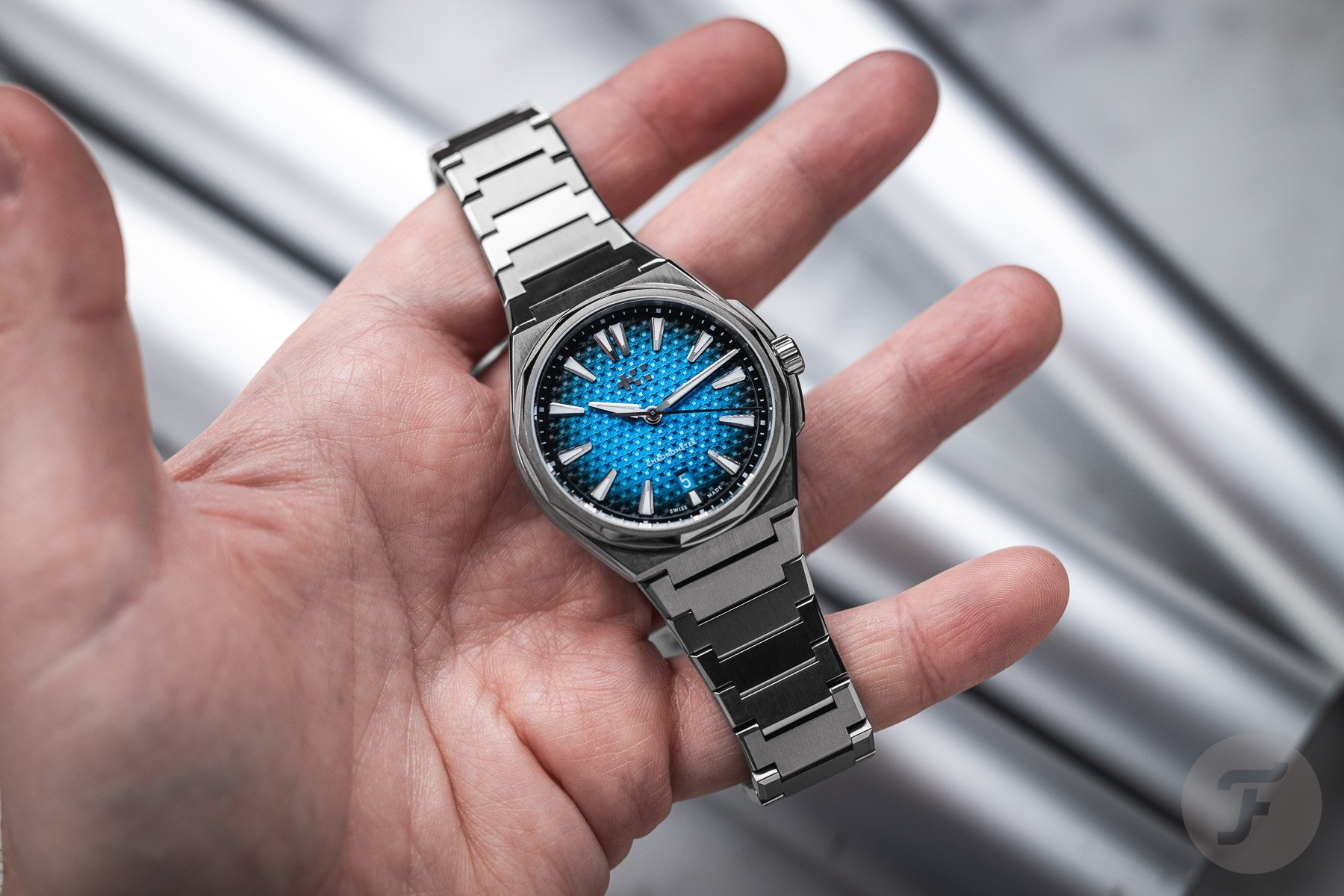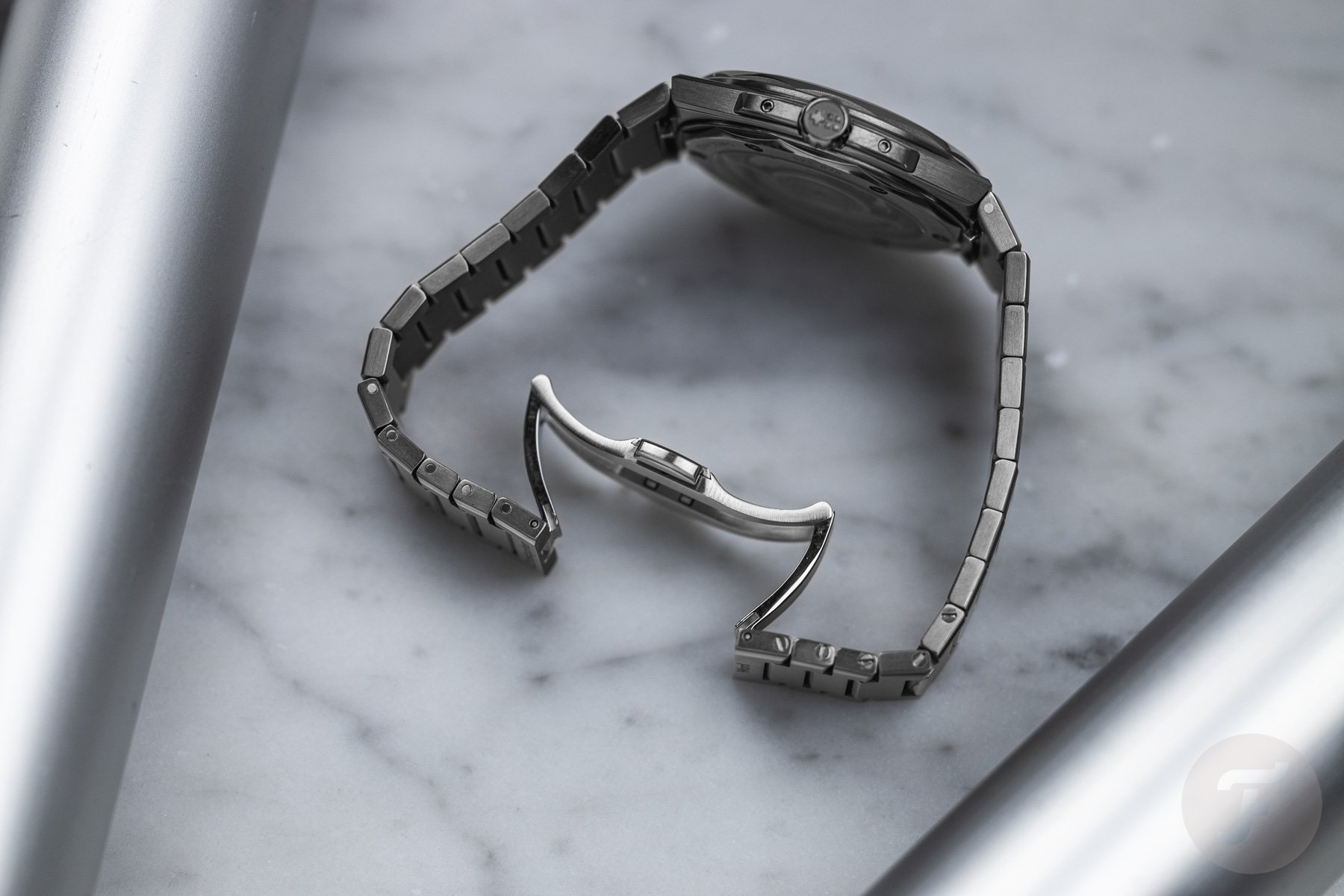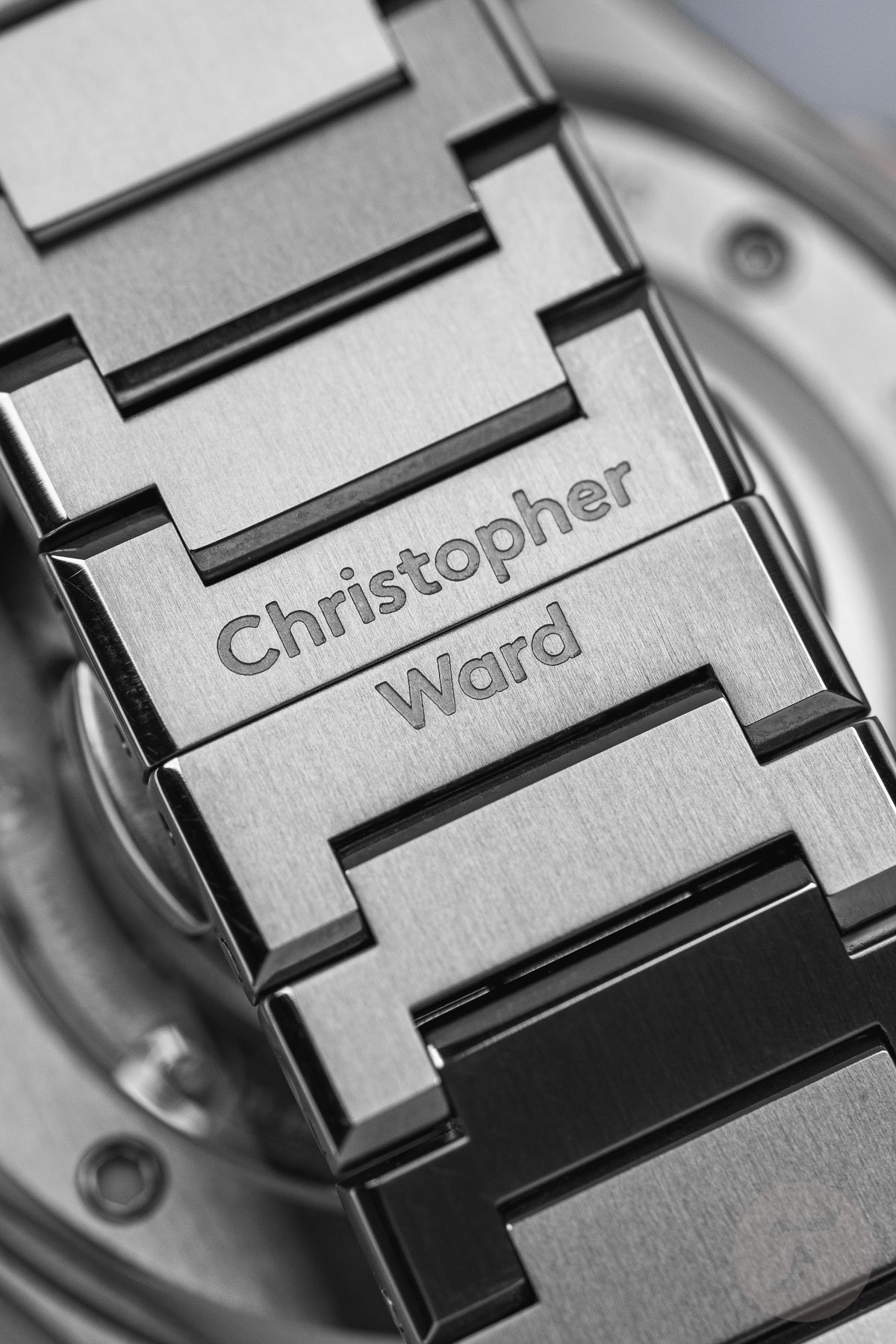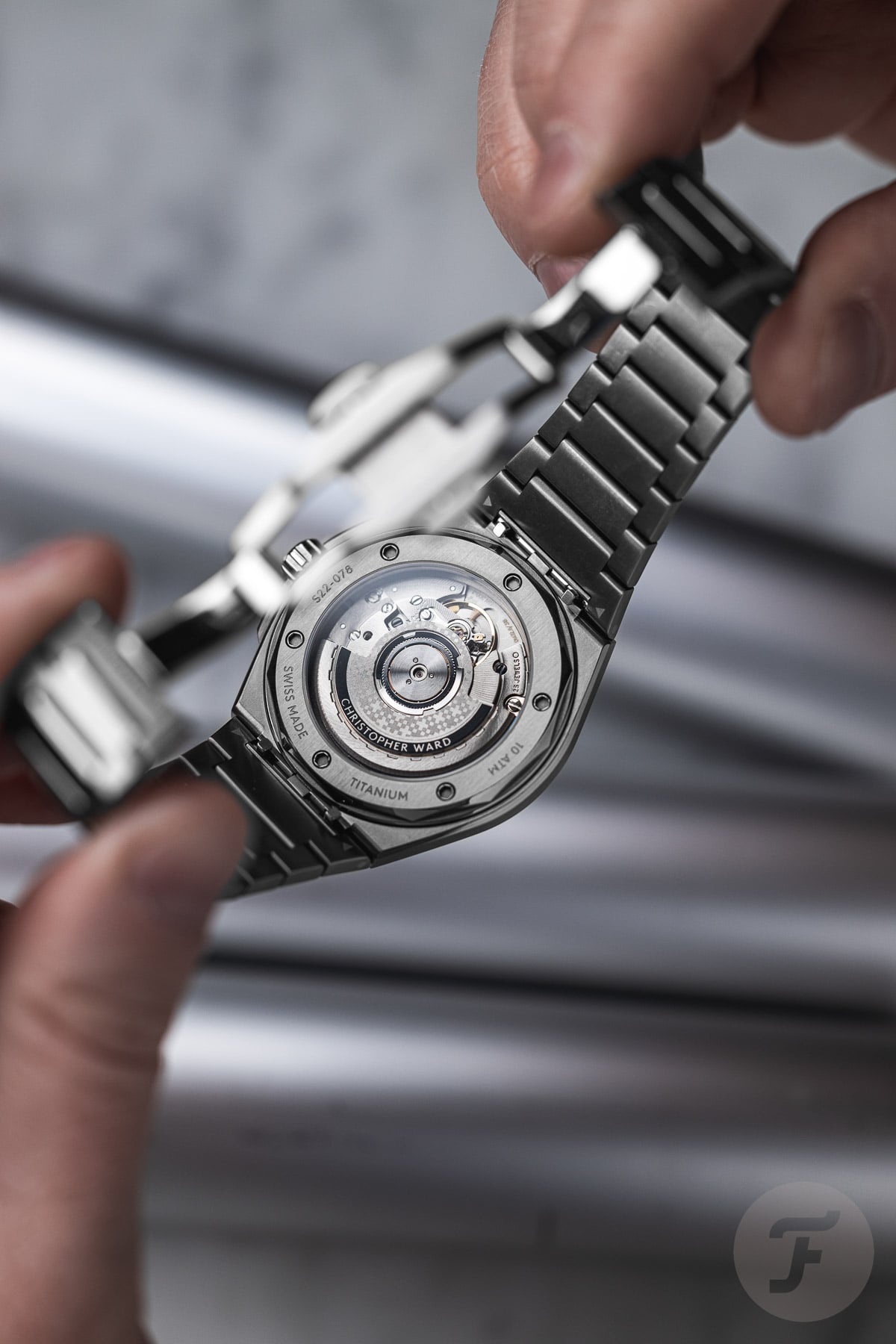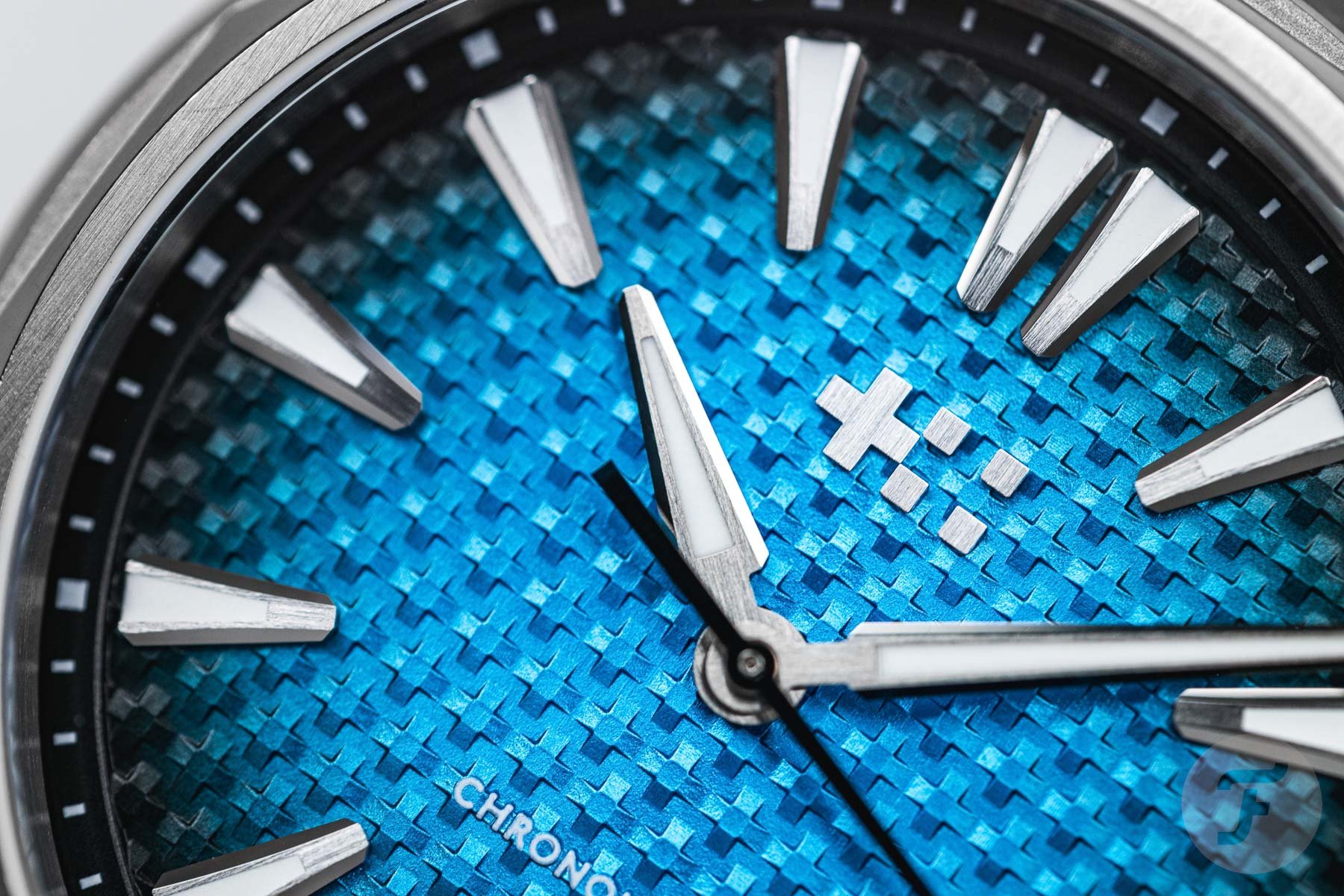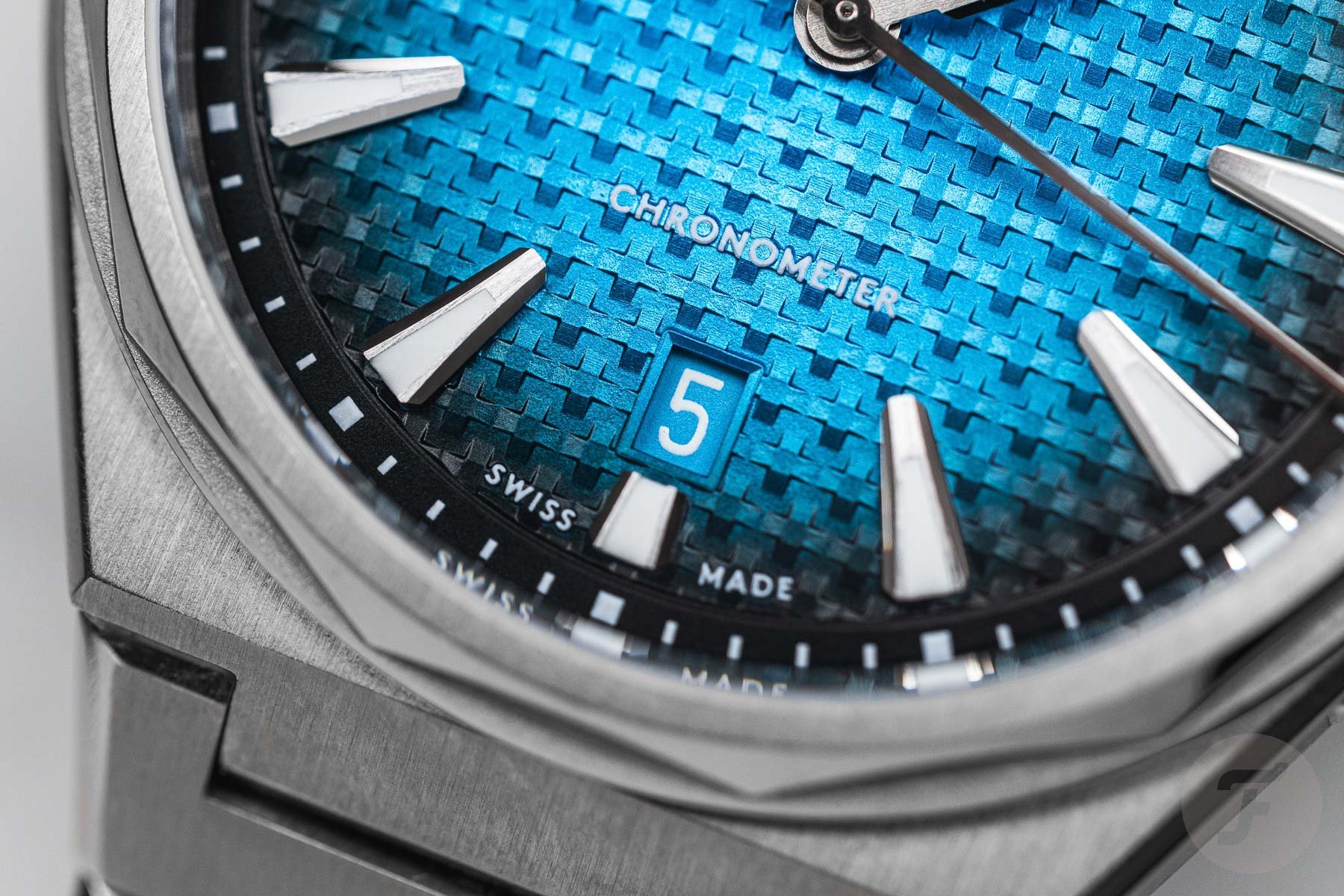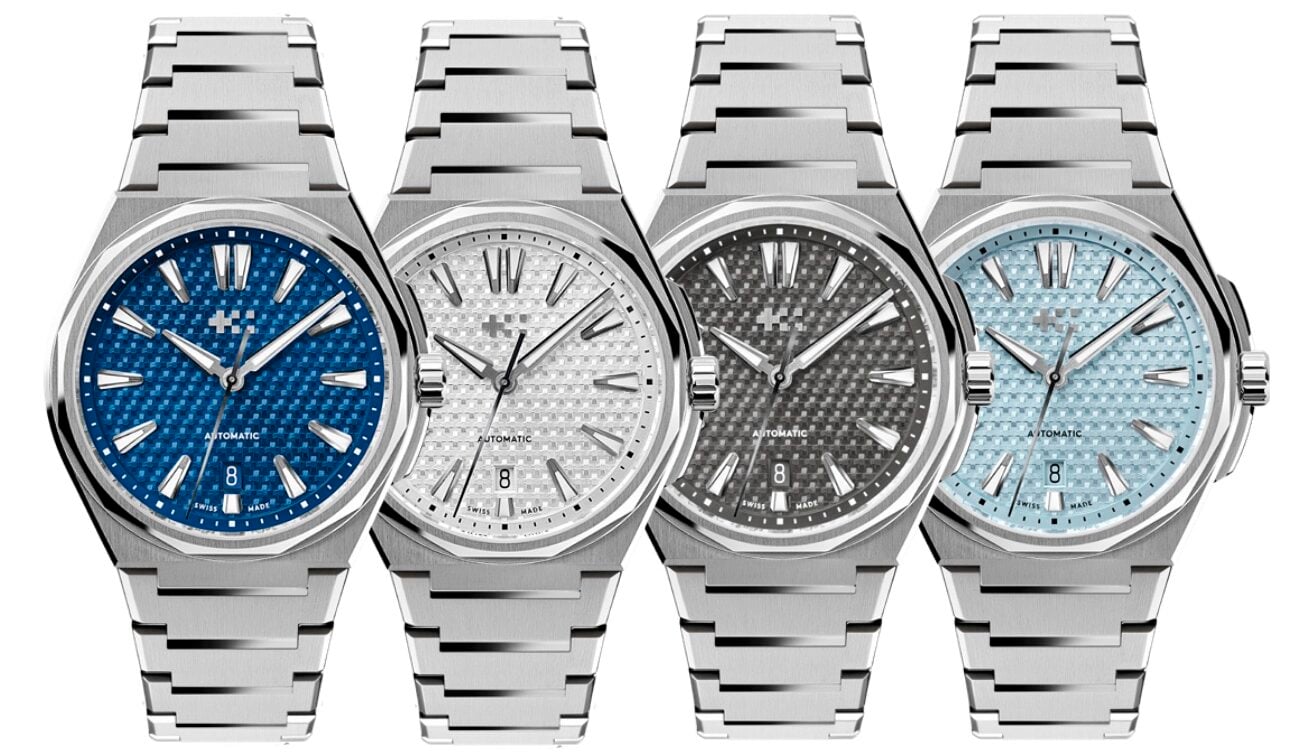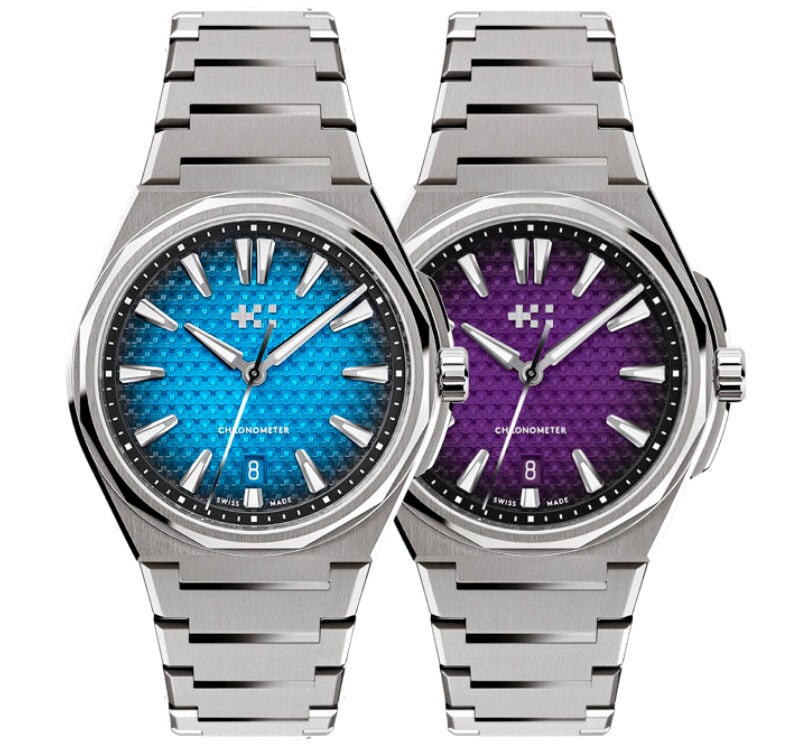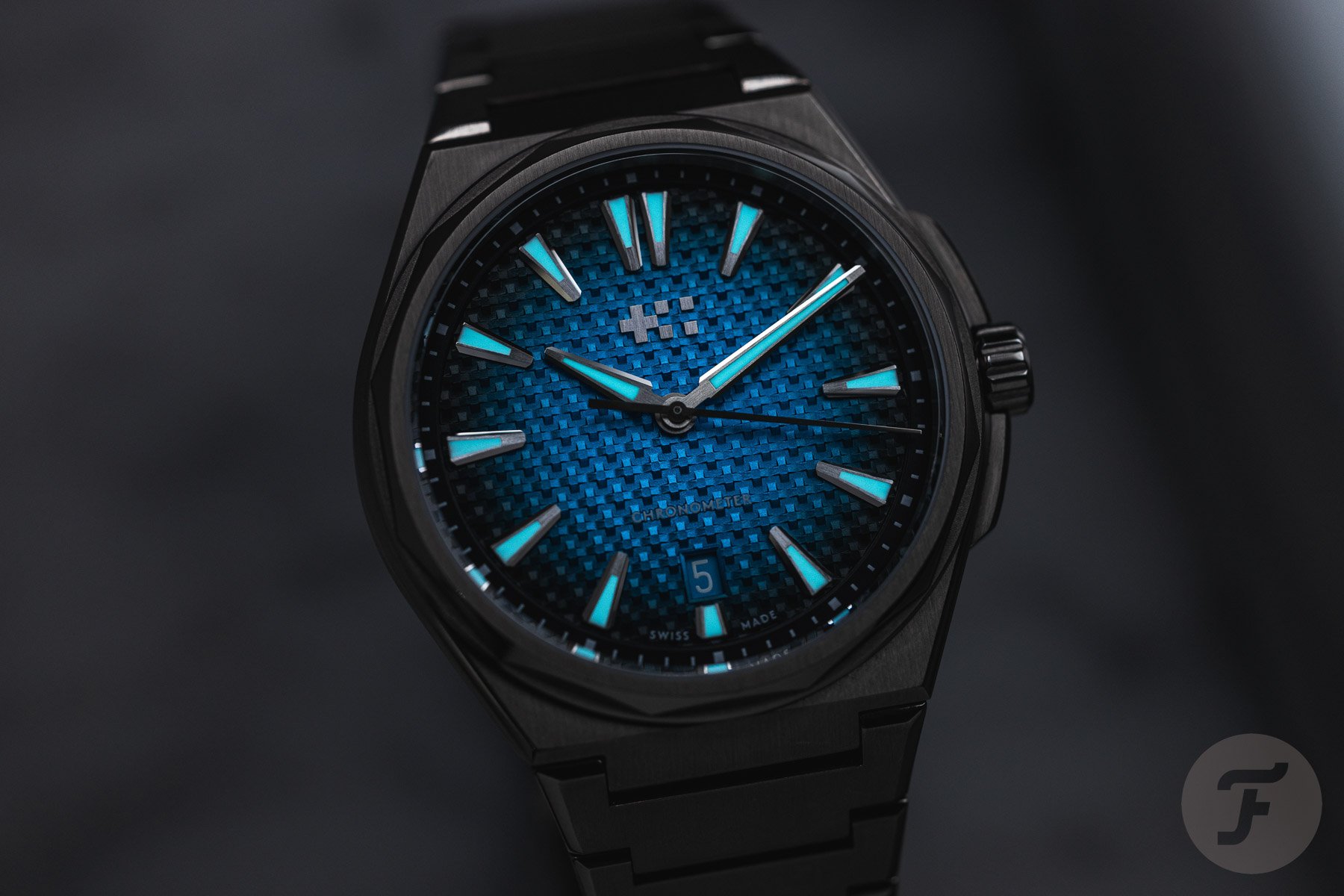Introducing Christopher Ward’s Excellent Take On The Integrated-Bracelet Sports Watch: The Twelve (Live Pictures)
Let’s start with a little riddle. Which watch am I describing here? It has a prominent bezel, a fairly simple and angular case design, a distinctive pattern on the dial, and, most importantly, an integrated bracelet. Any guesses? All right, I hear Royal Oak, Overseas, Defy, Laureato, Ingenieur…oh, and the PRX, yes! Those are all watches from the more renowned brands in the industry. They probably already had a watch with the same name or similar design sometime in the ’70s. So what do you do when you’re a younger brand and you would like to take a piece of the market for integrated-bracelet sports watches? Well, you take inspiration from those earlier models and create your own version. And that’s exactly how Christopher Ward came up with the brand-new The Twelve.
When I picked up The Twelve for the first time, I thought the 12-sided bezel felt very much like the octagonal one from the older Girard-Perregaux Laureato models. The screwed-on crown guards also looked a bit like the ones on the first-generation Vacheron Constantin Overseas. Furthermore, the design of the case and bracelet seemed like an improvement on the Tissot PRX. But even though all those separate elements may look like they’ve been inspired by other watches, the fact that they’ve all been put together on one watch makes Christopher Ward’s The Twelve feel like a new and original design. This is also due, in big part, to the dial they’ve been combined with. And don’t forget that The Twelve is a lot more affordable and accessible than most of the watches mentioned above. Curious? Read on!
Stand on the shoulders of giants and differentiate
Of course, it’s going to be difficult to come up with a completely different-looking design when you have only so little room to maneuver in. Just think of the Bremont H1 Supernova, the Czapek Antarctique, and the Frederique Constant Highlife. They’re all integrated-bracelet sports watches from younger brands, and they all have elements that remind you of watches that have been around for much longer. But what I like about Christopher Ward is that the brand doesn’t hide where the inspiration came from. Most of the examples mentioned above are also mentioned in The Twelve’s press release that we received.
However, with that inspiration, the designers have created their version and thrown that special Christopher Ward sauce over it. As always, this results in a healthy mix of affordability, high standards of quality, and versatility. In general, the watches from Christopher Ward offer a lot of value for your money. Look, for example, at the C1 Bel Canto. One could describe it as a cross between a Breguet Tradition and a Rolex Explorer with a “Sonnerie au Passage” (hourly chime) complication — and all that for the price of a Tudor Black Bay 58. All right, that’s more than enough of an introduction. Let’s take a look at The Twelve.
The case and integrated bracelet
And where else to start than at that dodecagonal (12-sided) bezel? It’s the feature from which the model’s strong name is derived. This bezel has both polished and brushed finishes to highlight its shape. The almost fully brushed case it sits on measures 40mm wide and 44.5mm from lug to lug. The first link doesn’t fully articulate, though, just like those on many other watches in this genre. So although it does slope down a bit, effectively, it extends the length by a few millimeters. Nevertheless, this watch will fit many people’s wrists.
The bevels on the shoulders of the case and the crown guards have been polished. These match nicely with the bevels on the links of the bracelet. Each link is made out of one piece of steel, and all of them are connected with screws. For sizing purposes, there are ten removable links, four of which are half links. This is a nice touch since most bracelets of this type come with one, two, or no half links at all. The links are nice and thick, almost as thick as the watch’s mid-case. This really helps to emphasize the “integrated” character of The Twelve. The bracelet closes using a substantial butterfly clasp, and the Christopher Ward name is engraved on the outer side of the links. And luckily, it doesn’t matter which side of the clasp you close first because there’s no overhanging logo on either side.
Your choice of either stainless steel or titanium
When you decide to buy The Twelve, you can choose between versions in stainless steel or titanium. But the material is not the only difference between them. Apart from the different dial colors you can choose from — don’t worry, we’ll get to those dials in a minute — they also have different movements. The stainless steel one comes with an élaboré-grade SW200-1 automatic movement. It’s advertised to run between +20 and -20 seconds per day with a power reserve of 38 hours.
The titanium version of The Twelve, the one we were sent, comes with an élaboré-grade Sellita SW300-1 automatic movement. This one is a COSC-certified chronometer and, therefore, is regulated to run between +6 and -4 seconds per day. It also has an extended power reserve of 56 hours. And because the movement is slightly thinner, the case of the titanium version is too. At 9.95mm from top to bottom, the stainless steel case is still quite thin, but the titanium case really impresses at only 8.95mm slim. Both versions have a 10ATM water resistance rating as well. On the underside of both, you can see there’s a 12-sided case back. It is attached to the case with six screws and frames the sapphire exhibition window. Through it, you can see the corresponding movement with the rotor, which has custom Christopher Ward finishing on top.
The “plus” side of The Twelve
Finally, we get to the truly distinguishing feature of The Twelve — the highly textured and colorful dial. When I first looked at the dial, I thought it was made out of carbon fiber. This pattern, however, actually consists of numerous tiny Christopher Ward logos. The middle of each “plus” symbol has been raised, and its arms slope down towards the dial. This results in a unique interaction with the light it reflects. If you get the chance, I recommend you grab a loupe and take a look at it because it looks fantastic up close.
Indicating the hours and minutes are brushed and polished dagger-shaped hands with a good amount of lume. The hour markers on the dial look exactly like the tips of these hands. The date is also visible through a window at 6 o’clock. It is indeed legible, but because of its tone-on-tone execution, it doesn’t obstruct the fairly clean dial layout. There’s also an applied logo underneath the index at 12 o’clock, and the raised minute track provides additional depth to the dial.
The stainless steel version of the watch will be available with light Glacier Blue, darker Nordic Blue, Basalt Grey, or Arctic White dials. On the other hand, the titanium versions will feature Astral Blue or Nebula Purple dials. Both colors go very well with the slightly darker gray titanium case and bracelet, especially because these two dials also have a fumé finish.
Pricing and final thoughts
We also need to talk about the price, of course, because many of the watches that have inspired The Twelve’s design are either prohibitively expensive or very hard to get. The stainless steel version of The Twelve will cost £850 / US$995 / €1,095 on a rubber strap and £1,050 / US$1,225 / €1,350 on the integrated bracelet. The titanium version is slightly more expensive, which is also due to the more refined COSC-certified movement. That one will be available for £1,225 / US$1,375 / €1,595 on a rubber strap and £1,595 / US$1,825 / €2,075 on the bracelet.
This makes The Twelve a fairly accessible and compelling integrated-bracelet sports watch. It’s not as affordable as the Tissot PRX, but in my opinion, The Twelve is also a superior watch. It has better finishing, higher-quality movements, and, most importantly, a more original design, especially because of the texture of the dial. And with that complete package, I even think it’s a great challenger watch for some of its peers that are being sold for around €10,000 or more! My pick would be the titanium one, even though I’m not a big fan of fumé dials. I hope the brand still has some other versions up its sleeve for future release.
What do you think of The Twelve, Christopher Ward’s new integrated-bracelet sports watch? Let us know in the comments below, and for more information, check the official Christopher Ward website.
You can also find and follow me on Instagram: @fliptheparrot

